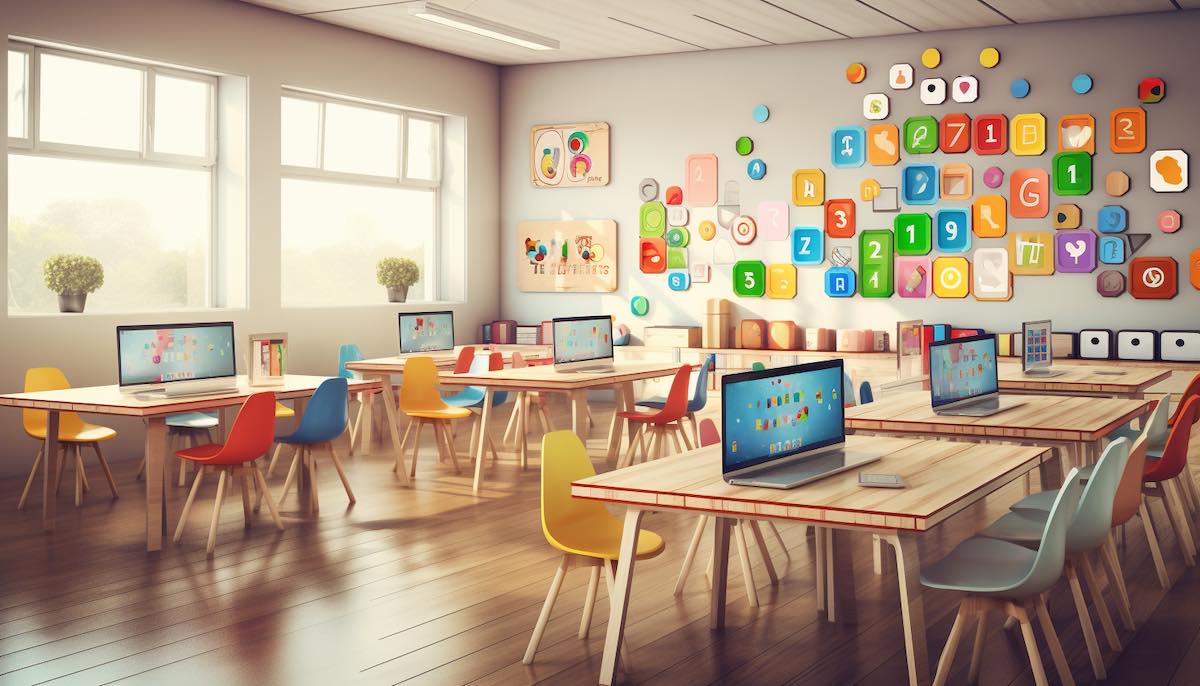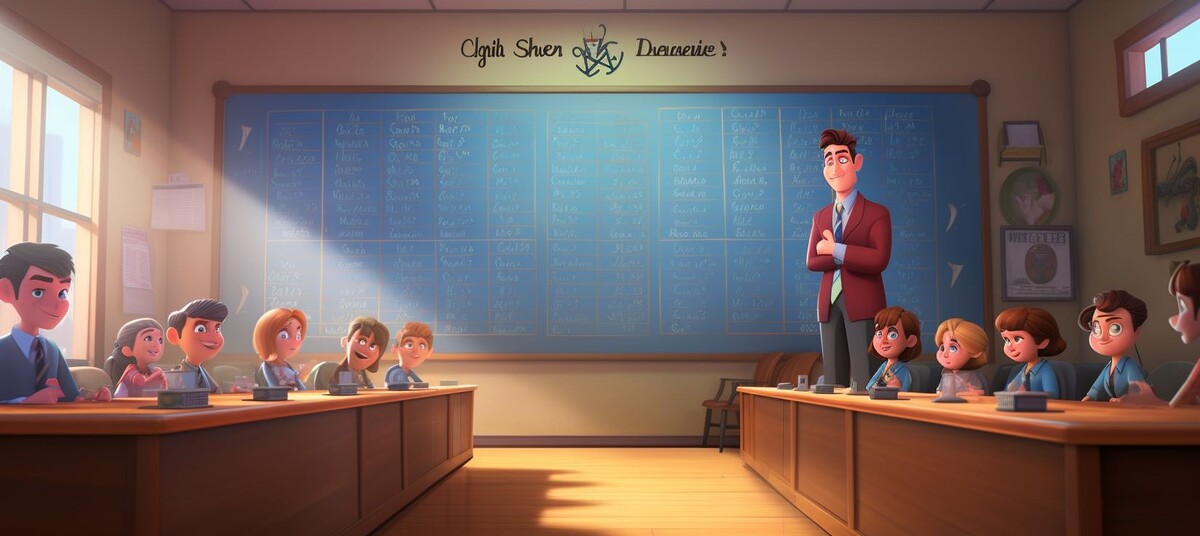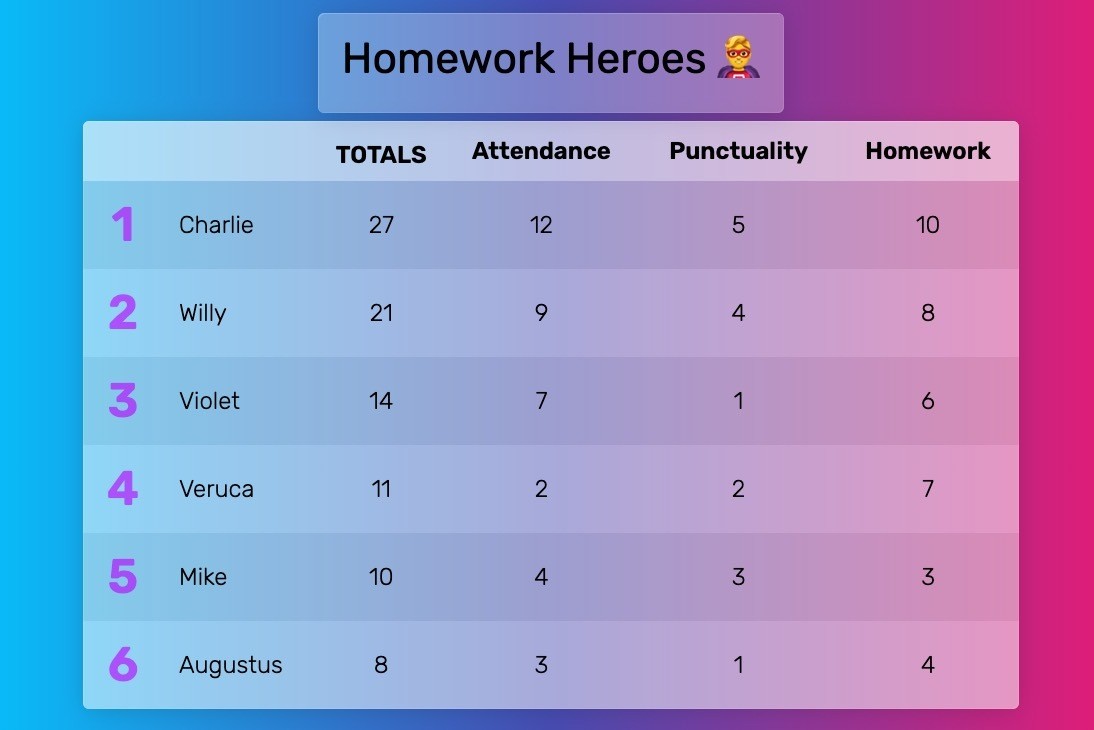Picture this: It’s Monday morning, and instead of groans about homework, your students are excitedly checking their progress on the class leaderboard. They’re comparing badges, strategizing how to earn more points, and actually asking for extra challenges. Sound impossible? Welcome to the world of educational gamification.
Across the globe, teachers are discovering that the same mechanics that make video games irresistible can transform education from a chore into an adventure. And the results speak for themselves: improved attendance, increased homework completion, and most importantly, students who are genuinely excited to learn.

Why Gamification Works in Education
The Science Behind Student Engagement
Educational psychologists have long known that motivation is the key to learning. But traditional methods—grades, detention, gold stars—often fall short. Gamification succeeds because it addresses multiple psychological needs simultaneously, tapping into the fundamental psychology of competition that drives human behavior:
Autonomy: Students choose their learning paths and strategies for earning points Mastery: Clear progression systems show skill development over time Purpose: Points and badges connect daily tasks to larger goals Social Connection: Leaderboards and team challenges build classroom community
Research from the University of Colorado found that gamified learning increases student engagement by 48% and improves knowledge retention by 36%. But perhaps more importantly, it makes students want to participate.
Digital Natives Speak Gaming Language
Today’s students have grown up with achievement systems. They understand XP, levels, and leaderboards intuitively. By speaking their language, teachers bridge the gap between entertainment and education.
Consider these statistics:
- 97% of teens play video games regularly
- The average student spends 13 hours per week gaming
- 74% of teachers report that game-based learning increases student motivation
Gamification isn’t about turning education into entertainment—it’s about using familiar frameworks to make learning more accessible and engaging.
Core Elements of Classroom Gamification
Points Systems: The Foundation
Points make abstract concepts like “effort” and “improvement” tangible. Effective point systems go beyond traditional grading:
Experience Points (XP) for completing assignments:
- Homework: 10 XP
- Class participation: 5 XP per contribution
- Helping classmates: 15 XP
- Perfect attendance weekly: 25 XP bonus
Different Point Categories recognize diverse strengths:
- Academic Points for test scores and assignments
- Creativity Points for original thinking
- Collaboration Points for teamwork
- Leadership Points for helping others
Point Multipliers for extra engagement:
- Double XP days for challenging topics
- Streak bonuses for consistent performance
- Early bird bonuses for submitting work ahead of deadlines
Badges: Celebrating Diverse Achievements
Badges recognize accomplishments that grades often miss:
Skill Badges:
- “Grammar Guru”: Master of punctuation and syntax
- “Math Wizard”: Solved 100 problems correctly
- “Science Explorer”: Completed extra experiments
Behavior Badges:
- “Helping Hand”: Assisted 10 classmates
- “Punctuality Pro”: On time for 30 consecutive days
- “Growth Mindset”: Improved test scores by 20%
Special Achievement Badges:
- “Risk Taker”: Attempted bonus challenges
- “Creative Thinker”: Proposed unique solutions
- “Class Champion”: Highest weekly point total
Leaderboards: Fostering Healthy Competition
Classroom leaderboards require thoughtful implementation to motivate without discouraging struggling students:
Multiple Leaderboard Types:
- Individual rankings for personal achievement
- Team leaderboards for collaborative goals
- Improvement leaderboards showing growth percentages
- Subject-specific boards for different strengths
Time-Based Resets keep everyone engaged:
- Daily challenges for immediate goals
- Weekly competitions for sustained effort
- Monthly tournaments with special rewards
- Semester-long campaigns for major achievements

Real-World Success Stories
Elementary Excellence: Mrs. Johnson’s 4th Grade Transformation
Sarah Johnson had taught 4th grade in Austin, Texas for twelve years, and she’d tried everything—sticker charts, detention, parent conferences. Nothing moved her homework completion rate above 60%. Then, during a particularly frustrating October evening, she watched her own son spend three hours grinding for experience points in a video game. The next morning, she announced “Quest for Knowledge” to her skeptical class.
The transformation wasn’t immediate, but it was profound. Johnson structured her entire curriculum as an adventure where students earned XP not just for completing assignments, but for quality work, creative solutions, and helping struggling classmates. Weekly “Boss Battles” replaced traditional quizzes—same content, completely different energy. Students formed guilds that competed in monthly “Knowledge Tournaments,” with victorious teams earning the right to design the next month’s bonus challenges.
By semester’s end, the numbers told only part of the story: homework completion soared from 60% to 94%, test scores jumped 18% on average, and behavioral incidents practically disappeared with a 75% reduction. But what Johnson treasures most are the moments she never expected—students staying after class to strategize, forming study groups without prompting, and one particularly shy student becoming the class’s most celebrated “guild leader.” “Marcus hadn’t spoken voluntarily all September,” Johnson recalls. “By December, he was teaching multiplication strategies to his entire table because it would earn his guild crucial tournament points.”
Middle School Magic: The House System Revolution
Inspired by Harry Potter, Lincoln Middle School implemented a house system across all grades:
Four Houses competed for the House Cup:
- Points earned individually contributed to house totals
- Special challenges pitted houses against each other
- Teachers could award points for any positive behavior
- Monthly assemblies celebrated leading houses
Measurable Outcomes:
- Tardiness reduced by 82%
- Library usage increased 3x
- Peer tutoring sessions rose from 10 to 150+ monthly
- Standardized test scores improved across all subjects
High School Innovation: AP History Comes Alive
Robert Chen’s AP History class had a reputation problem. Students called it “the grind”—necessary for college applications but soul-crushingly boring. Chen knew his students spent hours on complex video game narratives, managing resources in Civilization, and debating character motivations in role-playing games. Why couldn’t history class tap into that same engagement?
“Civilizations: The Course” began with each student choosing a historical figure as their “avatar”—not just to study, but to embody throughout the year. One student chose Harriet Tubman, another selected Genghis Khan, a third picked Marie Curie. Every assignment became a “quest” that developed their avatar’s story. Essays weren’t papers—they were “diplomatic correspondence” between historical figures. Group projects became “alliance missions” where Napoleon had to work with Gandhi to solve modern problems using historical precedents.
The gamification went deep: students created “artifacts” (multimedia projects) that earned massive XP, unlocking privileges like choosing essay topics or designing quiz questions. They held “grand councils” where avatars debated across centuries, with points awarded for historical accuracy and rhetorical skill. The transformation was remarkable—AP exam pass rates shot from 72% to 91%, attendance hit 99%, and every single student completed optional enrichment activities. But Chen’s proudest moment came two years later when five former students sent a photo from their college history seminar with the message: “We’re still using the alliance system. Thanks for teaching us that history is a game worth playing.”
Implementing Gamification: A Teacher’s Guide
Phase 1: Foundation Building (Week 1-2)
Start Simple:
- Choose one class or subject for pilot program
- Implement basic point system for existing activities
- Create visual progress tracker (chart or digital display)
- Explain system clearly with written rules
Essential Elements:
- Clear point values for all activities
- Transparent tracking system students can access
- Weekly point announcements or updates
- Simple rewards (privileges, not prizes)
Phase 2: Expanding Engagement (Week 3-4)
Add Complexity Gradually:
- Introduce 3-5 achievement badges
- Create team or table group competitions
- Implement daily/weekly challenges
- Add bonus point opportunities
Student Input:
- Survey students about preferred rewards
- Let them suggest new badge categories
- Vote on team names and identities
- Co-create special challenges
Phase 3: Full Implementation (Month 2+)
Advanced Features:
- Multiple leaderboard categories
- Student “character sheets” tracking various skills
- Narrative elements connecting curriculum
- Cross-curricular point opportunities
Sustainability Measures:
- Automate tracking where possible
- Recruit student “game masters” to help manage
- Regular “balance patches” adjusting point values
- Quarterly “seasons” with fresh starts

Digital Tools for Classroom Gamification
All-in-One Platforms
ClassDojo
- Real-time behavior tracking
- Parent communication integration
- Customizable point categories
- Free for teachers
Classcraft
- Full RPG experience with quests and battles
- Curriculum integration tools
- Team-based gameplay
- Analytics dashboard for progress tracking
Kahoot!
- Game-based quizzing platform
- Instant leaderboards after each game
- Homework challenges feature
- Reports on student performance
Simple Leaderboard Solutions
- Quick setup without student accounts
- Visual displays perfect for classroom screens
- Multiple tracking options
- Free tier available for educators
Google Sheets + Scripts
- Customizable to exact needs
- Free with Google account
- Requires some technical knowledge
- Can automate calculations
Specialized Subject Tools
Math:
- Prodigy Math Game
- Khan Academy (energy points system)
- IXL (with achievement certificates)
Reading:
- Epic! (reading rewards program)
- Newsela (reading level progression)
- ReadTheory (adaptive quizzes with points)
Science:
- Legends of Learning
- Mystery Science (exploration badges)
- BrainPOP (quiz scores and achievements)
Addressing Common Concerns
“What About Students Who Fall Behind?”
This question haunts every teacher considering gamification, but the evidence suggests that struggling students often benefit most from game-based systems. Traditional grading creates a fixed hierarchy where students quickly learn their “place”—the A students, the C students, the failures. Gamification shatters this static structure by recognizing that success isn’t monolithic.
Consider how effective gamification creates multiple paths to victory. While traditional systems reward only correct answers, gamified classrooms can award effort points for attempting difficult problems, improvement bonuses for personal growth regardless of starting point, collaboration points for helping peers understand concepts, and creativity badges for approaching problems differently. Team systems naturally create peer support networks where stronger students gain points by lifting up struggling classmates—suddenly, helping isn’t charity; it’s strategy.
Take Maria, a student with dyslexia in Ms. Garcia’s 7th-grade class. In traditional settings, Maria consistently scored in the bottom quartile, gradually withdrawing from participation. But Garcia’s gamified system included “Persistence Points” for repeated attempts, “Courage Badges” for tackling challenging texts, and “Growth Multipliers” that rewarded improvement over absolute performance. By December, Maria had earned more Persistence Points than any other student. During the class’s monthly ceremony, her peers erupted in genuine applause when she received the “Unconquerable Spirit” award. “She went from never raising her hand to volunteering to read aloud,” Garcia notes. “Her test scores improved too, but more importantly, she learned that struggle doesn’t mean failure—it means you’re leveling up.”
“Doesn’t This Trivialize Learning?”
Gamification enhances, not replaces, educational substance:
- Points attach to meaningful learning objectives
- Badges recognize real skill development
- Competition motivates deeper engagement
- Game elements are means, not ends
Research shows gamified classes cover 12% more curriculum content while maintaining or improving comprehension levels.
“How Do I Manage the Complexity?”
Start small and build gradually:
Minimal Viable Gamification:
- Week 1: Simple point tracking on whiteboard
- Week 2: Add weekly totals announcement
- Week 3: Introduce one special challenge
- Week 4: Create first badges
Many teachers report spending less time on classroom management after gamification, as students self-regulate to earn points. If you’re exploring different platforms for your classroom, our comparison of top gamification tools can help you choose the right solution.
“What About Grades?”
Gamification complements, doesn’t replace, traditional assessment:
- Points can convert to participation grades
- Badges can earn extra credit
- Leaderboard position doesn’t affect academic grades
- Game elements motivate learning assessed traditionally
Best Practices for Educational Gamification
Design Principles
Balance Competition with Collaboration
- 60% individual challenges, 40% team-based
- Rotate team compositions regularly
- Reward helping behaviors explicitly
- Create “rising tide lifts all boats” mechanics
Maintain Academic Integrity
- Points for effort and improvement, not just correct answers
- Prohibit “gaming the system” behaviors
- Regular “balance updates” based on observation
- Focus on learning objectives, not just points
Ensure Inclusivity
- Multiple intelligence categories for badges
- Accommodate different learning styles
- Consider time and resource constraints
- Private opt-out options for sensitive students
Avoiding Pitfalls
Common Mistakes:
- Over-complexity from the start
- Focusing only on top performers
- Inadequate explanation of rules
- Inconsistent point awarding
- Forgetting to celebrate achievements
Warning Signs:
- Decreased intrinsic motivation
- Unhealthy competition levels
- Student stress about points
- Widening achievement gaps
- Focus shifting from learning to gaming
The Long-Term Impact
Academic Outcomes
Studies tracking gamified classrooms over multiple years show:
- Sustained improvement in standardized test scores
- Higher graduation rates
- Increased college enrollment
- Better preparation for collaborative work environments
Life Skills Development
Beyond academics, gamification teaches:
- Goal-setting and strategic planning
- Resilience through “respawning” after failure
- Teamwork and communication
- Self-directed learning habits
- Healthy competition mindset
Teacher Satisfaction
Educators using gamification report:
- Renewed enthusiasm for teaching
- Stronger student relationships
- Reduced behavioral management stress
- Increased parent engagement
- Professional growth and innovation

Getting Started Today
Your First Week Checklist
Monday: Announce the new system
- Explain basic rules
- Demonstrate point earning
- Answer questions
- Generate excitement
Tuesday-Thursday: Track and display
- Award points publicly
- Update visible scoreboard
- Recognize early adopters
- Adjust as needed
Friday: Celebrate and reflect
- Announce week’s top scorers
- Award first badges
- Gather student feedback
- Plan week two improvements
Resources for Success
Professional Development:
The journey into educational gamification doesn’t have to be solitary. Coursera’s “Gamification in Education” course provides comprehensive theoretical grounding with practical applications you can implement immediately. EdX offers “Design and Development of Games for Learning,” which goes deeper into the psychology and mechanics of engagement. Many local education departments now run workshops where you can network with other gamifying teachers, sharing successes and troubleshooting challenges together.
Community Support:
The online teacher community has embraced gamification with remarkable enthusiasm. Facebook’s “Gamification in Education” group has swelled to over 50,000 members who daily share victories, seek advice, and offer resources. Whether you’re struggling with point inflation or celebrating your first successful boss battle, you’ll find teachers who’ve been there. Reddit’s r/gamification provides broader perspectives while r/Teachers offers classroom-specific insights. On Twitter, following #gamificationineducation connects you to thought leaders and innovators pushing boundaries worldwide.
Ready-to-Use Materials:
You don’t need to build from scratch. Teachers Pay Teachers offers hundreds of gamification templates—from simple point trackers to elaborate quest narratives—many created by educators who’ve tested them in real classrooms. Pinterest boards overflow with visual inspiration for physical classroom displays that make progress tangible. YouTube has become an invaluable resource with teachers recording their implementation journeys, offering honest tutorials that show both successes and stumbles. Start with what others have built, then customize to fit your unique classroom culture.
The Future of Gamified Education
Emerging Trends
AI-Powered Personalization: Adaptive difficulty adjusting to individual student needs VR/AR Integration: Immersive educational experiences with real-world rewards Blockchain Badges: Portable, verifiable achievements across institutions Parent-Student Co-op Mode: Family engagement through shared challenges
Preparing Students for Tomorrow
Gamification mirrors future work environments:
- Project-based collaboration
- Continuous skill development
- Data-driven performance tracking
- Remote team coordination
- Agile methodology principles
Students learning through gamification today are better prepared for careers that don’t yet exist.
Frequently Asked Questions
How does gamification enhance learning?
Gamification enhances learning through multiple evidence-based mechanisms that address both cognitive and motivational aspects of education:
Immediate Feedback Loops: Traditional education often delays feedback—students wait days or weeks to receive graded work. Gamification provides instant feedback through points, visual progress bars, and achievement notifications. This immediacy allows students to adjust their learning strategies in real-time, reinforcing correct approaches and quickly correcting misunderstandings.
Increased Intrinsic Motivation: Points and badges tap into our natural desire for achievement and recognition. When students see visible progress toward goals, their brains release dopamine—the same neurotransmitter associated with learning and memory formation. This creates a positive association with educational activities.
Safe Failure Environment: Video games normalize failure as part of the learning process. Lost a life? Try again. This mindset transfer to education reduces test anxiety and encourages experimentation. Students become more willing to attempt challenging problems because “failure” becomes “another attempt” rather than permanent judgment.
Social Learning Amplification: Leaderboards and team challenges create collaborative learning environments. Students naturally discuss strategies, teach each other, and celebrate collective victories. Research shows peer-to-peer teaching often results in deeper understanding than traditional instruction alone.
Goal Clarity and Progress Visualization: Traditional grading often obscures what students need to do to improve. Gamification makes goals explicit (“earn 50 XP by completing these five activities”) and progress visible (progress bars, level indicators, badge collections). This transparency reduces anxiety and provides clear direction.
Quantitative research supports these mechanisms: studies show gamified learning increases student engagement by 60% and improves knowledge retention by 40% compared to traditional methods. More importantly, students report enjoying the learning process, which creates sustainable long-term engagement.
What is gamification in education examples?
Here are proven gamification examples from real classrooms:
Classcraft - A comprehensive classroom management system that turns the entire school year into a role-playing game. Students create avatars (Mages, Healers, Warriors) and work in teams to complete quests while learning curriculum content. Teachers report 90%+ homework completion rates and dramatic reductions in behavioral issues.
Duolingo for Schools - While primarily known for language learning, Duolingo’s education version provides teachers with dashboards tracking student progress through gamified lessons featuring streaks, experience points, and competitive leagues. Over 300,000 teachers worldwide use it with measurable improvements in vocabulary retention.
ClassDojo - Used in over 180 countries, this platform awards points for positive behaviors and academic achievements. Parents can see real-time updates, creating home-school connections. Teachers report improved classroom culture and increased parent engagement.
Kahoot! - Transforms quizzes into competitive game shows where students answer questions on their devices while a leaderboard displays after each question. Studies show 96% of students report increased motivation and engagement during Kahoot sessions.
House Systems (inspired by Harry Potter) - Entire schools divide students into houses that compete throughout the year. Individual achievements contribute to house totals, creating school-wide community and friendly competition across grade levels.
Quest-Based Curriculum - Teachers like Robert Chen structure entire courses as narrative adventures where assignments become quests, tests become boss battles, and curriculum units form chapters in an ongoing story. Students report feeling more connected to material and understanding how individual lessons connect to larger concepts.
Badge Systems - Schools like Quest to Learn in New York award digital badges for mastering specific skills. These badges are portable, verified credentials that colleges and employers increasingly recognize as evidence of competency beyond traditional grades.
Does gamification work for all age groups?
Yes, but implementation must be age-appropriate:
Elementary (K-5): Young students respond strongly to immediate rewards, visual progress indicators, and team-based challenges. Simple point systems, colorful badges, and class-wide goals work exceptionally well. At this age, competition should be primarily collaborative (“can our class reach 1,000 points?”) rather than individual rankings.
Middle School (6-8): This age group is highly social and status-conscious, making leaderboards and peer recognition particularly motivating. They enjoy more complex systems with multiple paths to success. Narrative elements and role-playing mechanics engage their developing abstract thinking abilities.
High School (9-12): Older students appreciate sophisticated systems that respect their maturity. They respond to authentic challenges, portfolio building (collecting badges for college applications), and gamification that clearly connects to future goals. Autonomy is crucial—let them influence game mechanics and rewards.
College/University: Adult learners engage with gamification that emphasizes professional development, skill credentials, and competitive internship/job opportunities. Platforms like LinkedIn Learning use progress tracking and certificates effectively for this demographic.
Professional Development: Teachers and corporate training programs successfully use gamification with adult learners, focusing on career advancement, skill mastery, and professional recognition rather than childlike rewards.
The key across all ages is matching game mechanics to developmental stages and cultural context. What works in 3rd grade (sticker charts) would alienate 11th graders, while complex branching narratives would confuse kindergarteners.
Is gamification in education effective?
Yes, extensive research demonstrates gamification’s effectiveness when properly implemented:
Academic Performance:
- Meta-analysis of 34 studies showed gamified learning improved test scores by 34% on average
- Homework completion rates increase 40-60% in gamified classrooms
- Knowledge retention improves by 9-12 months compared to traditional instruction
- Problem-solving skills show 45% improvement in gamified STEM courses
Engagement Metrics:
- 82% of students report increased motivation to participate
- Absenteeism decreases by 20-30% on average
- Time-on-task increases by 50% in gamified environments
- Student satisfaction scores improve across all demographics
Long-Term Benefits:
- Students in gamified classes show better self-directed learning skills
- Collaborative skills develop more fully through team-based game mechanics
- Growth mindset indicators increase significantly
- Students report less test anxiety and more positive associations with challenging material
Important Caveats: Gamification works best when:
- Game mechanics align with learning objectives (not just “points for attendance”)
- Systems are transparent and students understand rules clearly
- Multiple paths to success exist (not winner-takes-all competitions)
- Teachers maintain academic rigor—games enhance, not replace, substance
- Implementation includes regular feedback and adjustment periods
Poorly designed gamification can backfire, creating extrinsic motivation that crowds out intrinsic learning desire. The most effective systems use game mechanics to support genuine engagement with curriculum content, not to distract from it.
Conclusion: Level Up Your Classroom
Gamification in education isn’t about making school “fun and games”—it’s about harnessing powerful psychological principles to make learning more engaging, effective, and equitable. When students see their progress visualized, celebrate diverse achievements, and support each other toward common goals, education transforms from obligation to opportunity.
The beauty of educational gamification lies in its flexibility. Whether you’re teaching kindergarten or high school, managing 10 students or 100, working with limited resources or full technological support, there’s a gamification approach that can work for your classroom.
Start small. Pick one class, one simple point system, one way to display progress. Watch as students who never raised their hands start participating. See struggling learners find their strengths. Witness your classroom community strengthen through friendly competition and mutual support.
The game of education is changing. The question isn’t whether to implement gamification, but how quickly you can level up your teaching to meet students where they are—ready to play, ready to learn, ready to achieve.
Ready to gamify your classroom? Start with a simple, visual leaderboard that gets students excited. Try Leaderboarded free and transform your classroom engagement in minutes. No student accounts required, just instant motivation.